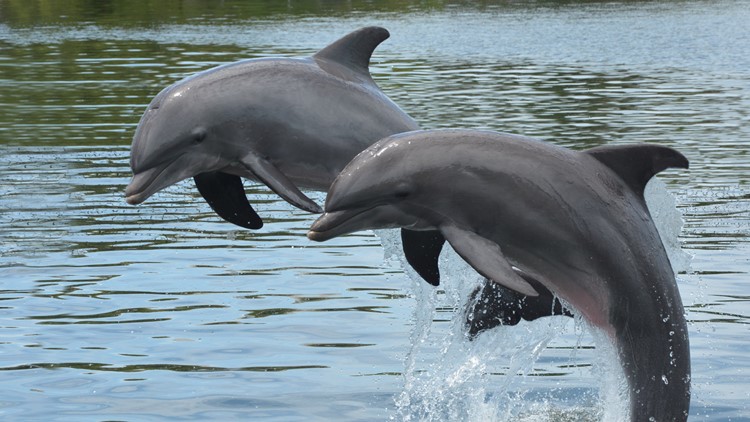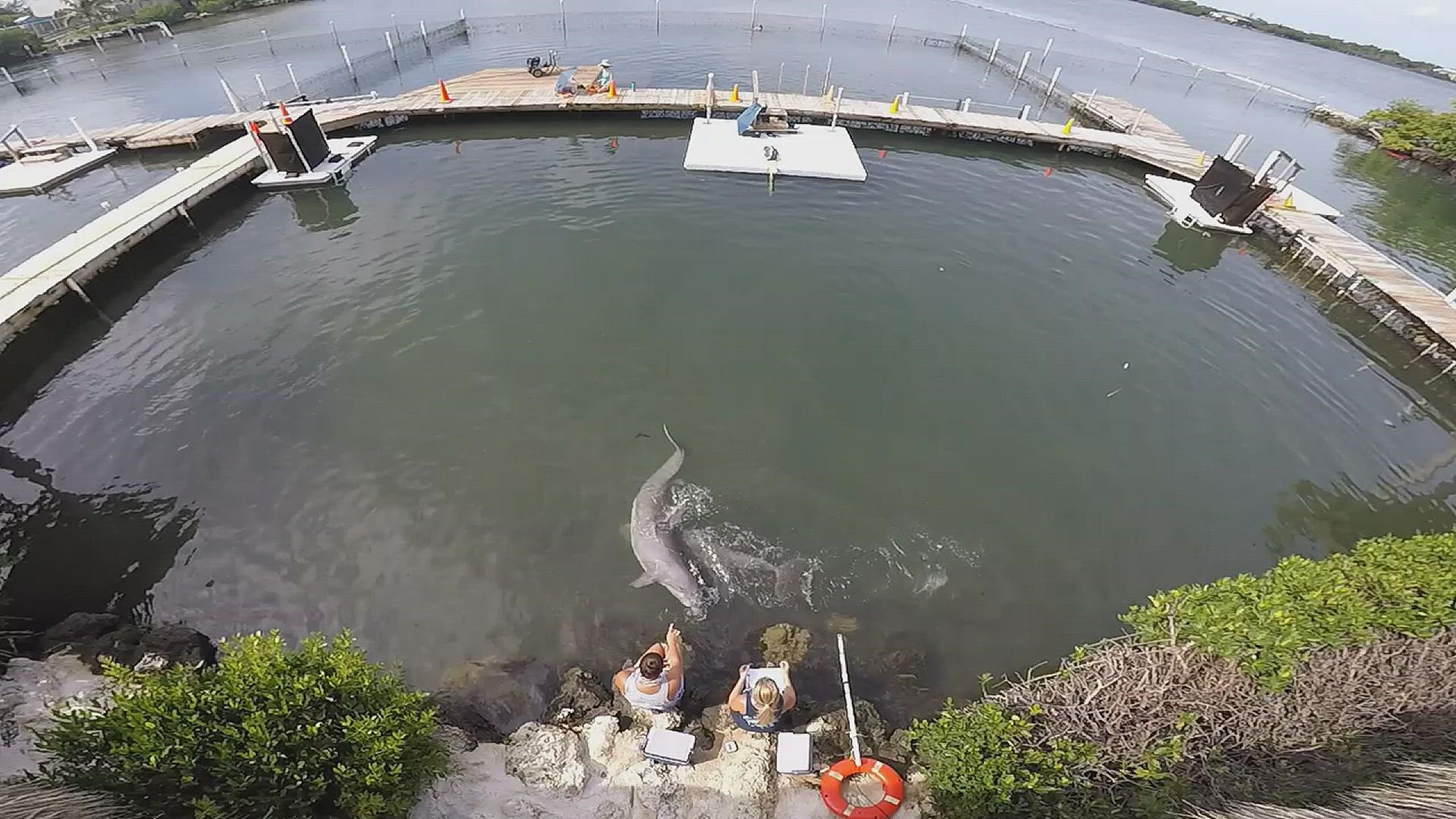MARATHON, Fla. — Through the muddied haze of an artificial lagoon, bottlenose dolphins Delta and Reese knew what to do.
Two buttons situated on opposite edges of the lagoon would, if hit in tandem, emit a special sound signaling they successfully worked as a team. It was far from an easy task. The dolphins had to communicate to coordinate their movements, using a series of clicks and whistles to time out when they would hit the button.
Delta and Reese were chosen for the experiment because they had shown to be highly motivated in the past. While they could leave the experiment at any time, the harder the game, the more they wanted to play. They also used vocal cues to communicate tasks more frequently than other dolphins.
"Both of them are like that. They're very like, 'Oh, I didn't get it this time? I'll get right into it,'" said Abigail Haddock, a research specialist who helped oversee the study at Dolphin Research Center in Grassy Key, Florida.
Delta and Reese proved adept at this particular task too, hitting the button at the same time, round after round. Reese leapt in the air after successful rounds. Delta cozied up to the trainers as if to say, "Did you see that?"


"They're really curious. They love to understand new things. They love to learn, especially Reese. They’re like A+ students," Haddock said.
On some rounds, though, researchers ramped up the amount of noise in the lagoon. Pounding noise mimicking the behemothic churn of shipping containers or oil drums — the most common kinds of noise pollution created by humans throughout waterways worldwide — blared throughout the lagoon.
"The boys knew the cooperation game, but until testing, they had never been asked to do it with that noise. That's what really made that difference," Haddock said.
Delta and Reese remained unfazed, but their ability to successfully complete the task suffered. They twisted their bodies, increased visual check-ins. Reese specifically raised his voice, elongating it, eventually screaming what would be the human equivalent of his name, over and over, to Delta.
Teammates that had once completed the task with ease were now reduced to shouting at one another as the noise droned higher.
Without the noise, Delta and Reese were successful in their cooperative task 85% of the time. In high noise rounds, the duo's success rate dwindled to 62%. A respectable effort, but hardly satisfactory passing grade for these A+ students.
"Despite the fact that they did employ these different strategies, and these mechanisms for compensating for more noise, they were still less successful as the noise increased. So, this really just shows that they know how to compensate and they can compensate. But it's not enough to sustain the same efficiency," said Dr. Pernille Sørensen, a PhD candidate at Bristol University in the UK who specializes in animal acoustic communication and cooperative behavior.
The unsuccessful rounds didn't have dire implications for Delta and Reese's survival. They could count on a full belly at the end of the day, a loving pat on the fin all the same. Just a game to them, after all.
For dolphins in the wild experiencing similar noise levels though, those missed cooperative moments with podmates could mark a meal missed, a warning ignored, a mate unfound.
"It's energy lost," Haddock said. "For dolphins in the wild, the implications of this study mean their very survival could be impacted by noise."
The findings, outlined in a recent study released earlier this year, adds to a growing body of research that hints human-made noise pollution is wreaking havoc on the lives of dolphins and whales in waterways around the world.
"If animals are working together, for example, to find food it might reduce the efficiency of that behavior. And ultimately, that could have implications for individual health. But then, over a longer time, may also have implications for population health," Sørensen said.

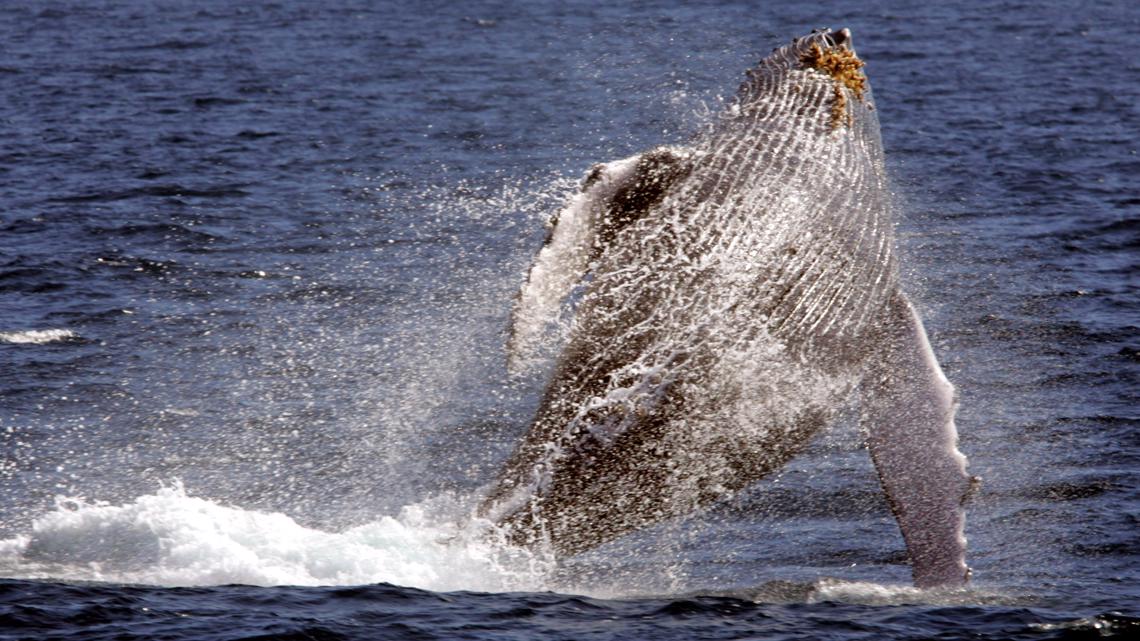
Large marine mammals aren't the only ones negatively impacted by anthropogenic noise. Studies released throughout the last decade found human-made noise pollution can negatively impact species across many environments: underwater anthropogenic noise stunts growth in cellular marine species, and noise from our electronics disrupts navigational orientation in migratory birds.
Scientists already knew both terrestrial and marine animals change their vocal or physical behaviors to make themselves heard over human-made noise, but to what extent they were able to successfully function within that noise remained a mystery.

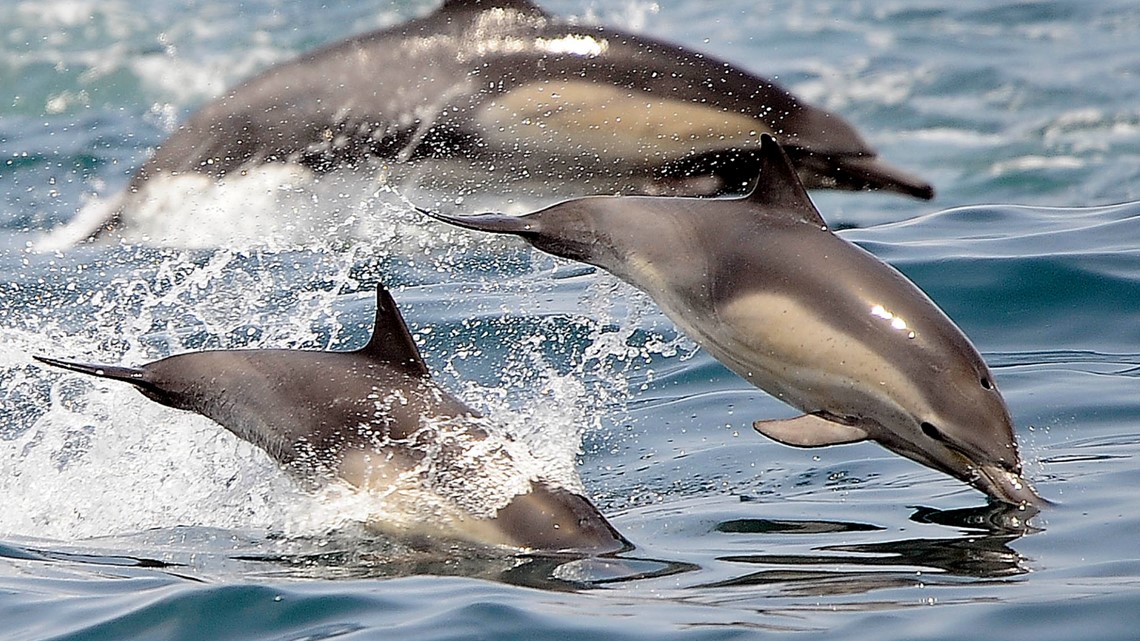
"What we didn't know was how well these combinatorial mechanisms work. Are they actually enough in order to maintain the same level of efficiency as pre-noise? That's really what we wanted to test here in a setting where animals are working together," Sørensen said.
Above water, terrestrial animals, like humans, rely mostly on sight to navigate through the day. In the ocean, sound becomes more crucial. It travels further than light underwater and up to four times faster than it does through air. Dolphins and other toothed whales — think orca, beluga, Atlantic dolphin — have evolved throughout millennia to rely on sound and echolocation, locating objects to reflect sound, to hunt in groups.
Dolphins can even use the sound of waves to orient themselves or forage for food.

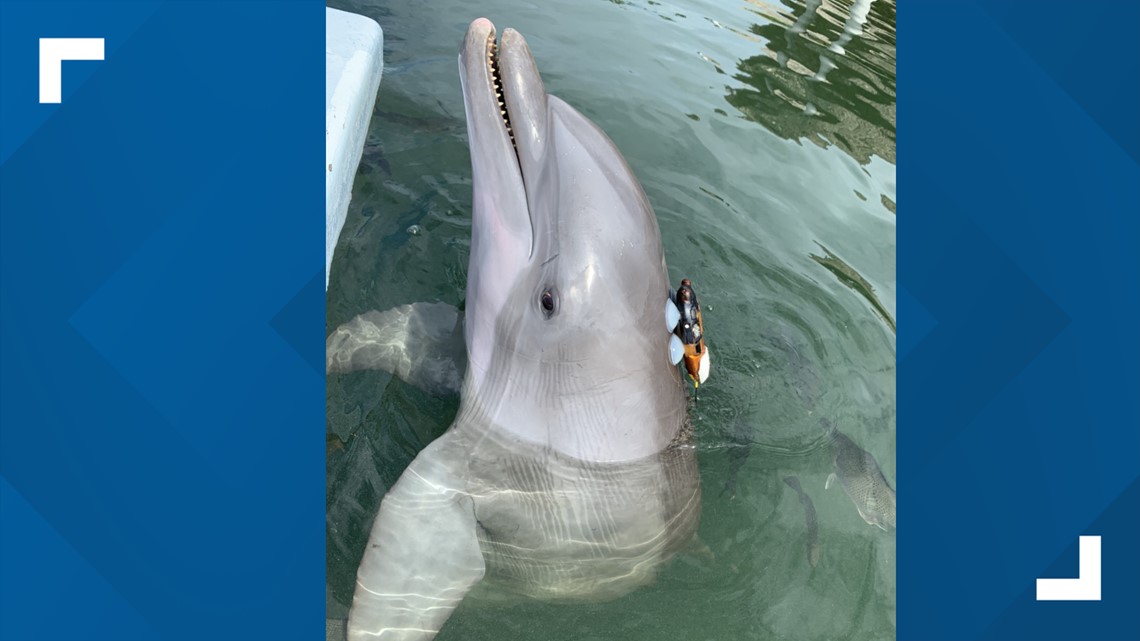
"The same things that make sound so advantageous for animals also make them prone to be disturbed by noise. And we use the oceans for so much we have, there's almost nowhere in the world where we don't have ships going through. So noise is everywhere. And it travels so far that it has potential to affect animals everywhere," Sørensen said.
Results of the study on Delta and Reese, which was conducted as a collaboration between researchers with The Dolphin Research Center in the Florida Keys the University of Bristol in the U.K., are some of the first indicators that dolphin collaboration specifically, so crucial in their highly sociable social structures, could be suffering from noise.
"It's not that they weren't trying to work. They did everything they could. The problem is that they tried everything and it still wasn't working,' Haddock said.
The techniques used by Delta and Reese also showed scientists what types of strategies dolphins used to try and work together during periods of extreme noise.
Both dolphins doubled their whistle durations, and increased their amplitude, in response to increasing noise. They echolocated at certain points, but eventually stopped altogether.
"[Echolocation] is basically like a flashlight light, you know. Every time you click, you turn on the flashlight, and you get an image. And it's the same thing to dolphins do just with sound. So the faster you click, the more often you get an image of where you are," Sorensen said.
That Delta and Reese stopped echolocating altogether at certain points in the study showed the dolphins could be impacted throughout a variety of frequencies humans can't perceive.
"It just kind of highlights that it's not only noise that's within the frequency range of communication calls that animals are using that is affecting the animals. They aren't just able to just switch and use a different types of call. They're still distracted overall," Sørensen said.
Researchers also noted the dolphins repeated whistling elements and stretched out their "whistle contour," the cetacean equivalent of their name.
Reese's whistles were about 1.85 times longer in the highest noise exposure trial compared to whistles emitted during the ambient noise trial, while Delta's whistles averaged 1.66 times longer during the ambient noise trial.
Below is a sound clip of is how Reese communicated his "signature whistle" to Delta with no extra noise in the lagoon.
This second clip shows how he changed his whistle to try and be heard against the noise.
How noise ultimately affects orca and dolphin species in the wild isn't fully understood, but scientists suspect it could be the impetus behind some mysterious mass casualty events.
In September 2020, around 450 orcas washed up on the shores of Tasmania in Australia in what scientists called one of the largest mass strandings ever, and some suspected unbearably loud noise could have played a factor.
Throughout some parts of the Pacific Northwest, where orca tour groups have noted a record-breaking year for whale sightings, researchers are finding the animals are fleeing noise generated from sightseeing boats. Recreational vessels operating increasingly popular wildlife-watching tours have become a focus of concern for animal disturbance, a 2017 study published in the journal Nature found.

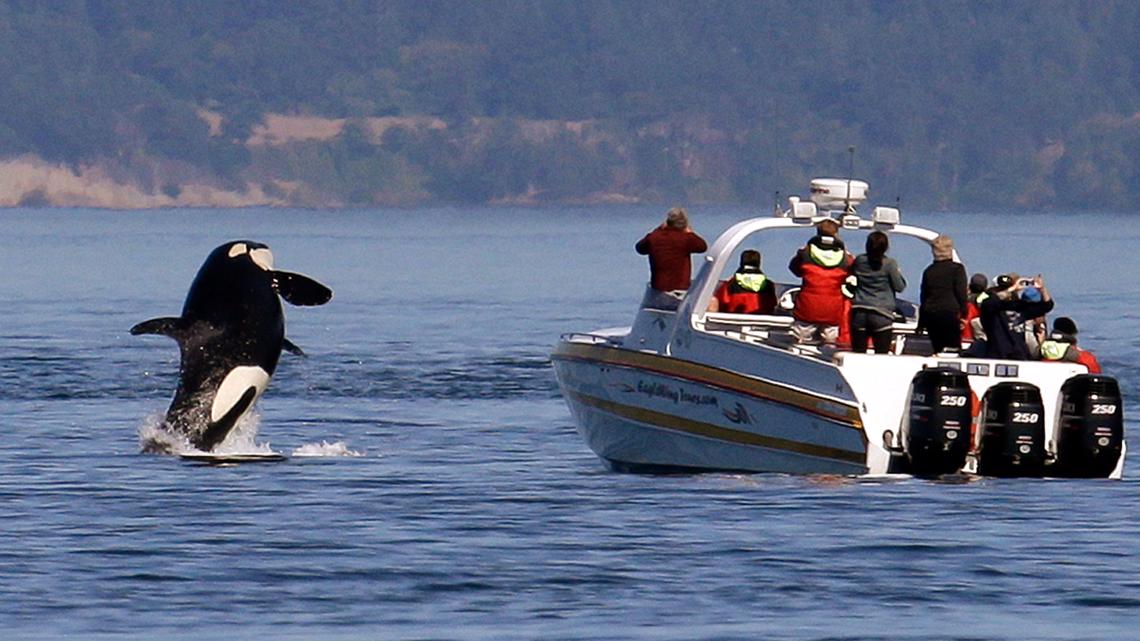
Scientists involved with the study in Florida said it's in this area that everyday people hoping to ensure their actions do not negatively impact dolphins and other species can take small, actionable steps.
Hoosiers heading to waterways where dolphins live for upcoming spring break trips can start by staying far away from these animals if they do encounter them on a boat.
"We frequently see boaters who probably don't know better coming in looking at dolphins. We get it — they're amazing, they are fascinating. But those people really don't understand how much of an impact they could be having, and what behaviors they're disrupting," Haddock said.
People operating in dolphin habitats can get further acquainted with the required distance they have to keep away from dolphins in the wild under the Marine Mammal Protection Act, which stipulates boaters must remains at least 100 yards away from whales, and at least 50 yards away from dolphins, porpoises, seals and sea lions.
The data on Delta and Reese was collected from September to November 2020 at the Dolphin Research Center in Grassy Key, Florida.

